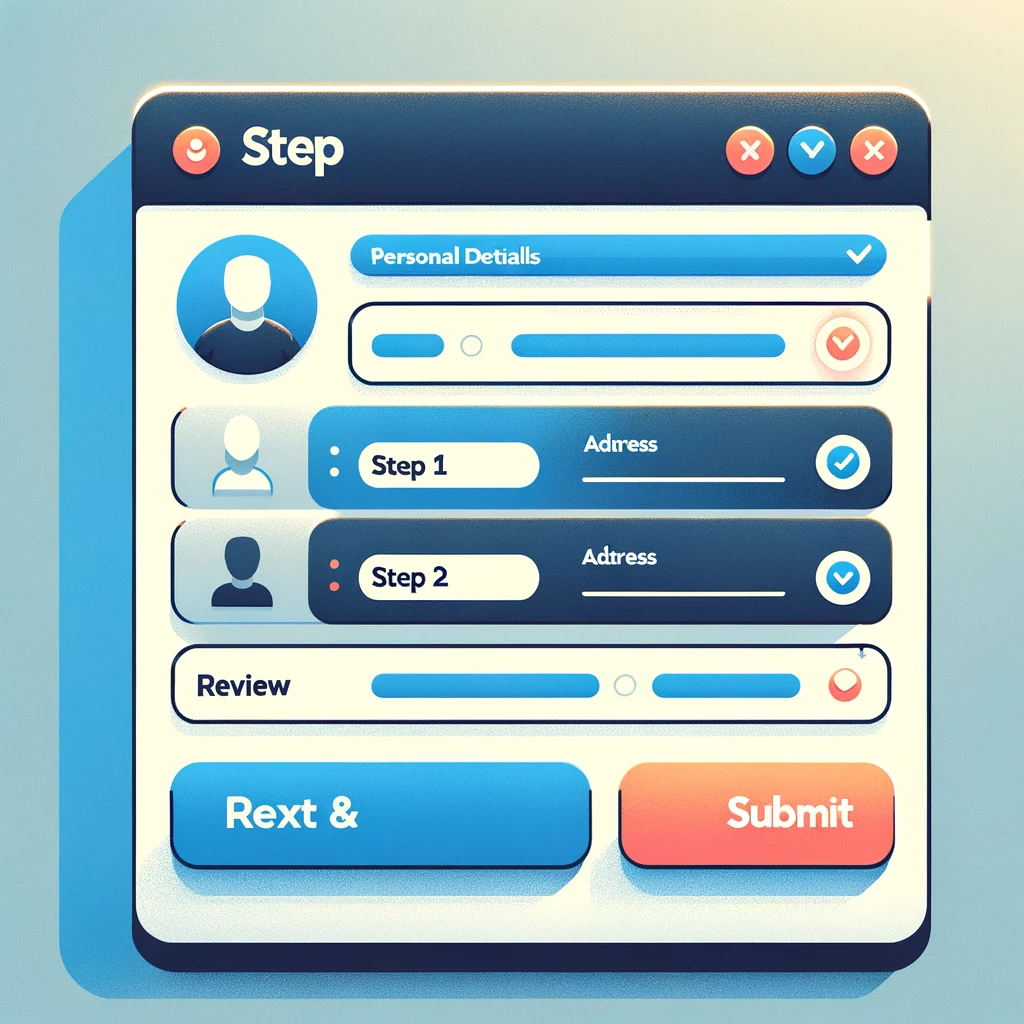Creating a step form (also known as a wizard form) in Angular involves a few key steps: organizing the form into distinct steps, managing form data across these steps, and controlling navigation between steps. Angular’s powerful form handling capabilities, particularly with Reactive Forms, make it well-suited for this task. Below is a simplified guide to creating a step form in Angular 17, focusing on setting up the environment, organizing the form structure, and managing navigation.
1. Setting Up Your Angular Project
Ensure you have Angular CLI installed. If not, you can install it via npm:
npm install -g @angular/cli
Create a new Angular project:
ng new angular-step-form --routing=true --style=scss
Navigate into your project directory:
cd angular-step-form
Generate the necessary components for each step of your form. For a simple three-step form, you might have:
ng generate component StepOne ng generate component StepTwo ng generate component StepThree
2. Setting Up Routing
In your app-routing.module.ts, set up routes for each step. This allows for navigation and bookmarking of each step.
import { NgModule } from '@angular/core';
import { Routes, RouterModule } from '@angular/router';
import { StepOneComponent } from './step-one/step-one.component';
import { StepTwoComponent } from './step-two/step-two.component';
import { StepThreeComponent } from './step-three/step-three.component';
const routes: Routes = [
{ path: '', redirectTo: '/step-one', pathMatch: 'full' },
{ path: 'step-one', component: StepOneComponent },
{ path: 'step-two', component: StepTwoComponent },
{ path: 'step-three', component: StepThreeComponent },
];
@NgModule({
imports: [RouterModule.forRoot(routes)],
exports: [RouterModule]
})
export class AppRoutingModule { }
3. Creating the Form
You can use Angular’s Reactive Forms for this. In your app.module.ts, import ReactiveFormsModule:
import { ReactiveFormsModule } from '@angular/forms';
// Other imports...
@NgModule({
declarations: [
// Your components...
],
imports: [
// Other modules...
ReactiveFormsModule
],
// Other module properties...
})
export class AppModule { }
In each component, set up your form group to represent the inputs for that step. For example, in step-one.component.ts:
import { Component, OnInit } from '@angular/core';
import { FormGroup, FormBuilder, Validators } from '@angular/forms';
@Component({
selector: 'app-step-one',
templateUrl: './step-one.component.html',
styleUrls: ['./step-one.component.scss']
})
export class StepOneComponent implements OnInit {
stepOneForm: FormGroup;
constructor(private fb: FormBuilder) { }
ngOnInit(): void {
this.stepOneForm = this.fb.group({
firstName: ['', Validators.required],
lastName: ['', Validators.required]
});
}
onSubmit() {
// Handle form submission, possibly navigating to the next step
}
}
Repeat a similar process for the other steps, tailoring the form group to the inputs required at each step.
4. Managing State and Navigation
You might want to keep the state of the form across the different steps. A simple way is to use a service for state management. Generate a service:
ng generate service FormData
In your service, you can use RxJS’s BehaviorSubject to keep track of form data across components:
import { Injectable } from '@angular/core';
import { BehaviorSubject } from 'rxjs';
@Injectable({
providedIn: 'root'
})
export class FormDataService {
private formData = new BehaviorSubject<any>({});
currentFormData = this.formData.asObservable();
constructor() { }
updateFormData(data: any) {
this.formData.next(data);
}
}
Inject and use this service in your step components to update and retrieve form data.
5. Navigating Between Steps
Use Angular’s Router to navigate between steps upon form submission. Inject Router in your component and navigate to the next step on submit:
constructor(private router: Router, private fb: FormBuilder) { }
onSubmit() {
// Update form data using FormDataService
// Navigate to the next step
this.router.navigate(['/step-two']);
}
This is a basic outline to get you started with a step form in Angular. Depending on your requirements, you might need to adjust validations, handle asynchronous operations, or integrate with a backend service.
